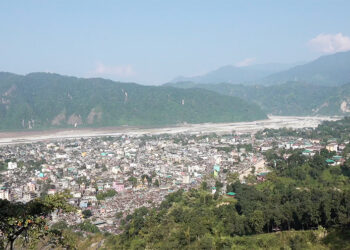 Bhutanese artisans are crying foul over facing stiff competition from imported crafts products. However, according to the home affairs minister, this is not all true. During the recent Meet the Press session, the minister said that Bhutanese craftsmanship is not only surviving but also maintaining its relevance and demand in the market.
Bhutanese artisans are crying foul over facing stiff competition from imported crafts products. However, according to the home affairs minister, this is not all true. During the recent Meet the Press session, the minister said that Bhutanese craftsmanship is not only surviving but also maintaining its relevance and demand in the market.
While Bhutanese artisans acknowledge that Bhutanese craftsmanship has improved compared to the past, they say they struggle to sell their crafts due to the widespread availability of imported alternatives in the market.
Dawa Tshering, sculptor said “It is difficult to sell our work because similar products are also imported. Additionally, when we participate in trade fairs, we do not attract many customers, as they tend to choose imported products instead.”
Dorji Wangdi, who is a gold/silversmith, said”In terms of quality, people say that statues imported from Nepal are better. Over time, things have changed compared to the past. Now, artisans have become more skilled, and the quality has improved, which some people have also acknowledged.”
People working in the handicraft industry told BBS that production costs are high since most materials need to be imported, leading to the perception that Bhutanese products are expensive. They also mentioned that mass production, like in other countries, is difficult.
Additionally, some said the market has become more competitive due to foreign craftsmen working in the country. Some added that although there is a huge interest in clay statues from tourists, fragility limits sales.
The Handicrafts Association of Bhutan calls for enhanced value chain— the entire process, from sourcing raw materials to marketing.
Khampa, Project Management Specialist of Handicrafts Association of Bhutan said “Until that is done, I do not think our local crafts are able to sell well in the market. So, we have to make sure that the government, the civil society organizations or the associations which are serving for craft industry and also the private sector should come all together to ensure that our value chain for the craft industry is well organised.”
Home affairs minister Tshering said the government safeguards and promotes local arts and crafts by regulating products, strengthening market linkages, and fostering skill development and innovation.
“My ministry along with the Ministry of Industry, Commerce and Employment and the Handicrafts Association of Bhutan are working on how to certify Bhutanese crafts and distinguish them from imported ones.”
He added that while statues continue to be imported from Nepal, imports from India have significantly declined based on their market studies.
Meanwhile, industry, commerce and employment minister Namgyal Dorji said the sale of imported crafts is prohibited at the craft markets in the country to promote local handicrafts.
“If we look at the Thimphu craft market, they sell only Bhutanese made arts and crafts. Likewise, craft markets that are being constructed in Trashigang, Monggar, Pema Gatshel, and Punakha are only allowed to sell authentic Bhutanese products.”
Meanwhile, the Ministry of Home Affairs is working with the Handicrafts Association of Bhutan to support artisans by formulating policies that protect them from competition and promote Bhutanese handmade products.
Kinzang Lhadon
Edited by Phub Gyem










